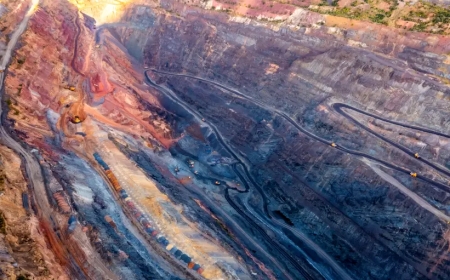Uranium price bound for US$160 record: Sprott
The price of uranium could surpass 2007 highs this year as utilities ramp up demand for nuclear fuel and miners hit snags in boosting supply, the world’s largest investment fund in the physical metal says.



Uranium’s highest-ever price was US$140 per lb. some 17 years ago and it could hit US$160 per lb. in 2024 from US$106 per lb. on Friday, according to John Ciampaglia, CEO of Sprott Asset Management. It runs the US$6.5 billion Sprott Physical Uranium Trust (TSX: U.U for $US; U.UN for $CAD).
“Even though the price is broken out to US$100, there’s a lot of opportunity here because you need to basically double production globally between now and 2040,” Ciampaglia told an online conference hosted by Toronto-based Bloor St. Capital on Friday. “It’s going to have to stay elevated for a very long period of time because of the long lead times and the large capex that’s required to basically get these projects built.”
The price of uranium has more than doubled from last April at around US$50 per lb. China is pushing ahead with the most (22) nuclear plants under construction to power its burgeoning middle class while 24 other nations pledged last month at a climate conference to triple atom-splitting electricity by 2050. The uranium supply deficit to meet those goals is estimated to be around 1.5 billion lb. to 2.3 billion lb.
This month, Kazakhstan’s Kazatomprom (LSE: KAP), the world’s largest uranium producer, said sulphuric acid shortages and construction delays at new deposits would cause it to miss production guidance over the next two years. Even with the uranium price hike, Cameco (TSX: CCO; NYSE: CCJ), Canada’s leading producer and now a builder of nuclear plants after the acquisition of Westinghouse, said this month the price is still too low to support most greenfield mining projects.
New investors
The soaring price has attracted new stock market investors to the commodity, especially to Sprott’s exchange-traded funds in uranium companies, Ciampaglia told the conference. That may help explorers and developers after a mini-surge powered by day-traders in 2021 sputtered before the commodity’s recent climb, he said.
“We’ve seen larger flows into our uranium mining ETFs around the world than we’ve had in the physical uranium trust, which is three times the size,” the CEO said. “We’ve definitely seen a widening of interest and a greater breadth of performance across the small- and mid-cap names in the space.”
It remains unclear how deeply a potential United States ban on importing Russian uranium from 2028 will impact the market, he said. But the Senate’s consideration, like the wider acceptance of nuclear power to fight climate change, marks a break with the Fukushima disaster era more than a decade ago in setting a new attitude, he said.
“All of these things have changed the psychology and the mindset of the fuel buyers,” Ciampaglia said. “They’re very focused on ensuring they have long term supply.”
Utilities have yet to resume buying 200 million lb. and more a year like they did before Fukushima to reload inventories and stock future fuel supplies. But they must to achieve the goals of decarbonization, energy security and reliable baseload power to offset the intermittency of renewables. They’re the three fundamental drivers shifting global energy policy behind nuclear power, he said.
“We’re very optimistic that the prices are going to remain elevated for an extended period of time. We don’t really see a catalyst that can knock this back.”



















